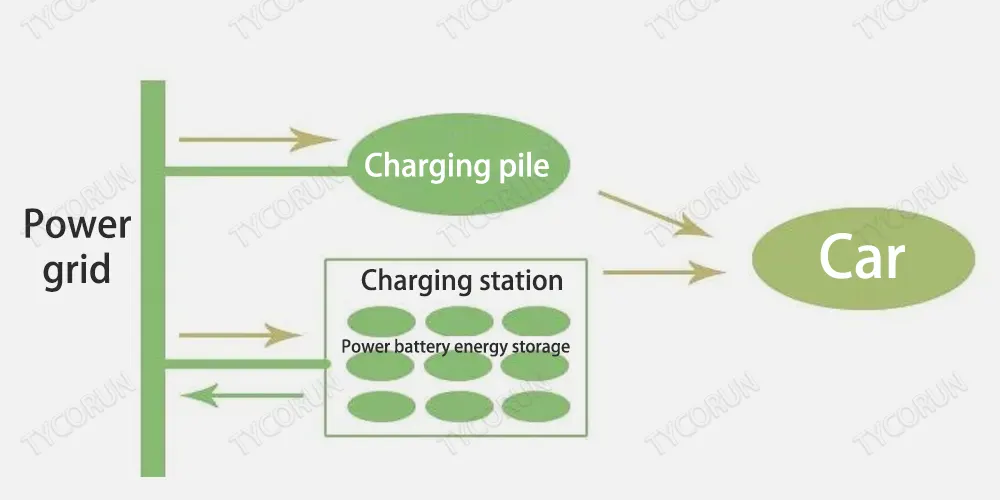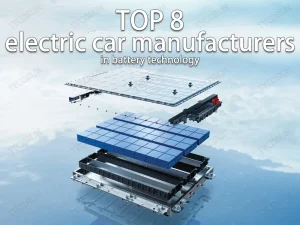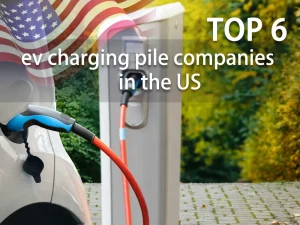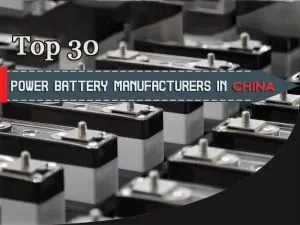Home » battery news » Application of energy storage in the field of vehicle charging
Application of energy storage in the field of vehicle charging
Under the action of various reasons, the demand for large-scale installed capacity of energy storage has been born.
The intervention of energy storage can cut peaks and fill valleys of power consumption in the power grid, which is conducive to alleviating the impact of high-load power consumption on power grid facilities.
From the perspective of the power industry, energy storage will become the stabilizer of the new power system. This article will introduce the application of energy storage in the field of vehicle charging.
Energy storage technology route
In the energy storage industry, there are various technical routes, which can be mainly divided into three types: electromagnetic energy storage, electrochemical energy storage and mechanical energy storage.

It is precisely because the centralized wind power plant has higher requirements on the natural environment.
Because the response speed and long-term economic efficiency are not as good as the electrochemical energy storage, the electrochemical energy storage is a new energy storage method.
It has come from behind and has gradually become the main solution for the energy storage industry. In electrochemical energy storage, the battery pack is the most important part of its energy storage system.
According to the different materials of the battery pack, it can be divided into ternary lithium battery packs, lithium iron phosphate battery packs, and sodium-sulfur battery packs.
Lithium-ion batteries have the highest efficiency, and because of their advantages in energy and power, energy storage systems based on lithium-ion battery packs are widely used.
Energy storage application scenarios
The application scenarios of energy storage can be roughly divided into: renewable energy grid connection, grid peak shaving, household power consumption, industrial and commercial power consumption, and ancillary services.
According to relevant statistics, in 2022, the newly installed capacity of electrochemical energy storage on the power supply side will be 3.87GWh, accounting for 49%, of which 85% are new energy storage; the grid side accounts for 43.14%, of which 88% are independent Energy storage, while the user side is less, 7.63%.

From the figure above, it can be seen that the charging stations related to electric vehicles on the user side account for only 0.19%, and based on the calculation of the total installed energy of 7857MWh in 22 years, the installed capacity of energy storage in electric vehicle charging stations is only 14.93MWh.
Energy storage in the field of vehicle charging
The main reasons for the small proportion of electric vehicle charging stations in the field of energy storage should be:
1) Among the current models that require battery swapping, they are mainly large vehicles, but the number of large commercial vehicles is relatively small compared with passenger vehicles, so it is difficult to expand the scale of battery replacement stations;
2) Because the relationship between most of the early charging piles/stations and the grid during construction is shown in the figure below, the charging piles are directly connected to the grid, and there is no relevant energy storage device as an auxiliary, so the construction cost of the charging piles is lower than that of the storage and charging stations ;

3) In the early stage of the development of electric vehicles, the number of electric vehicles is not high, and the impact of vehicle charging on the grid has not appeared. In this period, the role of storage and charging stations is not so important.
Future new charging network
However, with the continuous increase in the number of electric vehicles in recent years, the number of charging piles as infrastructure is also increasing.
Now, some problems emerged: when a large number of vehicles are connected to the grid for a certain period of time, the process of a large number of vehicles simultaneously drawing energy from the grid has an impact on the stability of the grid.
At the same time, it also brings huge pressure to the power facilities and equipment of the grid. Therefore, in order to alleviate problems such as voltage fluctuations caused by large-scale vehicles entering the network, the traditional way of directly connecting commercial charging piles to the network needs to be changed, and a new type of charging network has been formed.
In the architecture shown above, through the intervention of ‘solar storage’, a new power network is formed by combining the power grid and charging piles, the key of which is the regulation function of the smart micro-grid.
In the “solar storage” system, it is equivalent to two power sources, one is passive photovoltaic power generation, and the other is active intelligent power generation.
Through passive photovoltaic power generation, the electric energy generated by it is stored in the energy storage battery with a small capacity in the system, so as to meet the small-scale electricity demand.
How does it work
When the battery energy storage is not enough to provide the required electric energy, the active power generation of the microgrid itself is used to supplement the electric energy to provide sufficient external electricity demand.
When the output power of battery energy storage + intelligent power generation is not enough to meet the external demand for electricity, through the regulation of the micro-grid system, the power of the grid can be provided at the same time through grid-connection.

In this process, the smart microgrid can be used as a ‘reservoir’ to a certain extent to alleviate the impact of large-scale vehicles entering the grid on the grid.
In addition, since the smart microgrid can be separated from the grid to form an independent network, it can be applied in different scenarios such as industrial and commercial, industrial parks, etc.
Due to the rising electricity load in summer in recent years, many cities have taken measures to suspend work and production in industrial parks with large electricity consumption in order not to affect the lives of residents.
This has seriously affected the operation of many enterprises, and the smart microgrid can be said to solve the direct pain point in this application scenario.
The differences between smart microgrid and traditional generator sets mainly include: NVH, power, control system, volume, emission, energy storage, etc.
Summary
It is believed that the formation of this new type of network will further expand the proportion of the energy storage industry in the user end in the future. At the same time, the battery solution for the new charging infrastructure of solar storage and charging may be vigorously developed in the future.

























